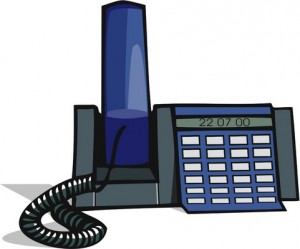According to a Verizon study, one in three businesses has admitted to suffering a breach as a result of a mobile device. The same study found that 80% of businesses were aware that they had a big gap in their network security as a result of mobile device usage.
Banning the use of mobile devices for work is not an option, however. The productivity benefits of these mobile devices are too big to give up, and chances are, employees will still use them.
So how can you make sure that your data is safe as it travels around in your (and your employee’s) pockets?
Basic protection for all operating systems
Regardless of your operating system and device model, the following security protocols can easily be implemented.
Fingerprint and/or face recognition and secure passcode – this feature not only protects you, but your employee as well. Highlight and encourage employees to set this security feature up on their devices.
Offer internal support to help less tech-inclined employees to set this up and troubleshoot common challenges with unlocking the device with these features.
Not only will this help keep your information secure if the device is lost, but it will also help prevent other unauthorized individuals from accessing your device if it is left unattended.
Use a VPN – A VPN provides a secure phone connection to a private server between your devices and your data and bypasses using public networks to access your information. This helps secure the data and encrypts it as it travels from point to point.
Enable data encryption – Both Android and iPhone devices can be encrypted through the device and it is highly recommended that you encourage your employees to activate this feature. Spreadprivacy.com has detailed instructions on how to do this for both Android and iPhone devices.
Set up remote wipe capabilities – Depending on the device, there is a function along the lines of Find My Phone that you can have implemented that will allow you to remotely lock and erase the device in the event it is lost or stolen.
Apple devices have the function built into the operating system and Android devices can enable this feature with app downloads.
Mobile protection for Android users
One of the great things about Android devices is that you have a variety of manufacturers, features, and price points to choose from.
While they might differ slightly in features and functionality, here are some basic tips for protecting your Android device:
- Only buy Androids from vendors who are proactive in issuing security patches
- Use 2FA (Two-factor authentication)
- Take advantage of built-in security features
- Do not save all passwords
- Only buy apps from Google Play
- Always, always back up the device’s data
- Encrypt your device (See instructions above)
- Be careful about connecting to public WiFi, and be diligent about securing your own WiFi networks.
- Use the Android security app
- Install a VPN
Mobile protection for iPhone users
Regardless of the model, all Apple iPhone devices will have the following security features. Keep in mind, however, that older models of the phone will not be able to take advantage of the newest iOS and may require an upgrade.
Here are 10 tips for keeping your iPhone safe:
- Update the iOS frequently. You can opt into automatic software updates through your phone as well so you don’t have to keep an eye out for new updates
- Enable 2FA (Two-factor Authentication)
- Set the phone to “self-destruct” or wipe the entire phone after someone fails to access the phone 10 times.
- Activate “Find my iPhone.”
- Avoid public WiFi
- Only use trusted iPhone charging stations
- Change your iTunes and iCloud passwords regularly.
- Revoke permissions to your camera, microphone, etc
- Use a passcode longer than 4 numbers
- Disable Siri access from the lock screen.
Take the next step
These tips will get you started on keeping your business, and personal, information safe as you roam. But this is just the first step. Take the next step and set up a full security audit to see where there may be a crack in your armor that leaves you vulnerable.



